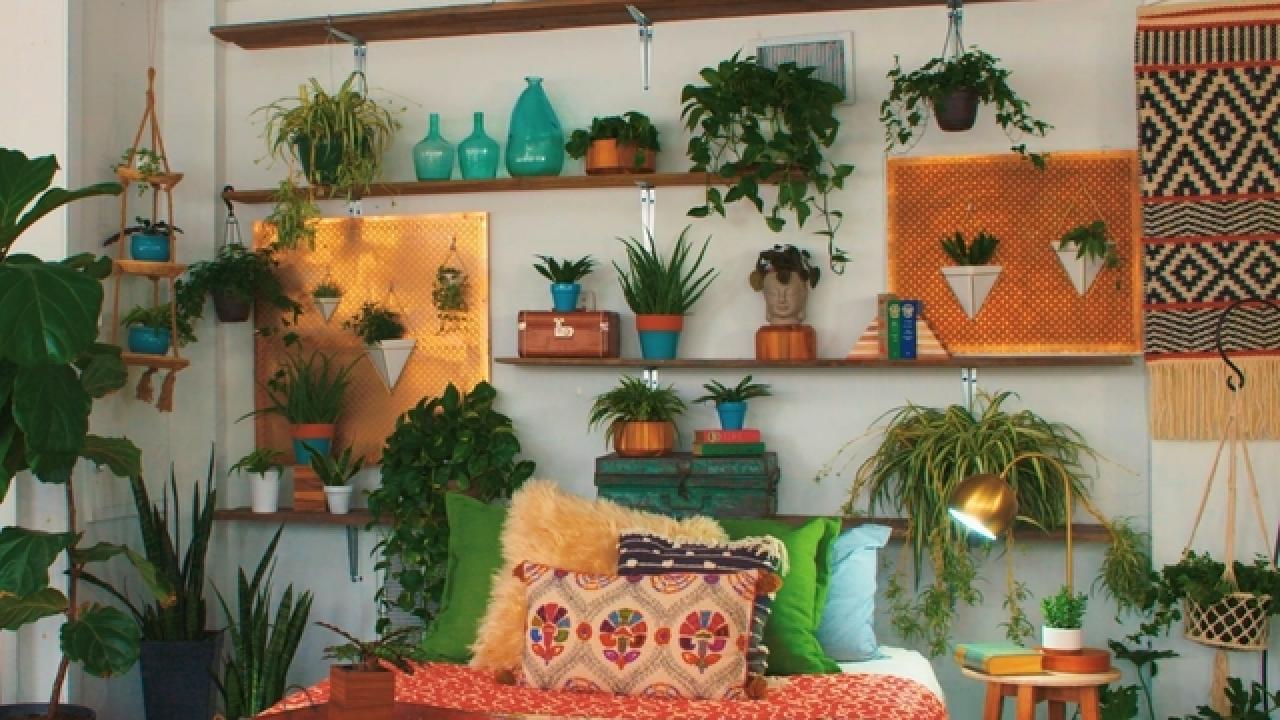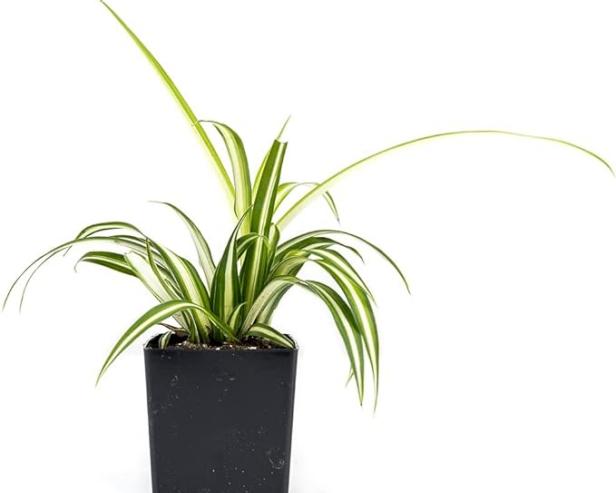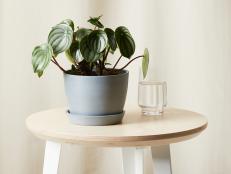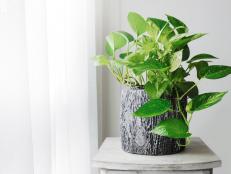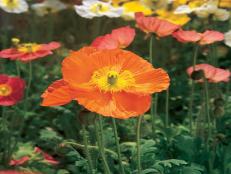Spider Plant Care: Tips for Growing Chlorophytum Comosum Indoors
Learn to care for this easy houseplant and how to fix the rare problems that could arise.
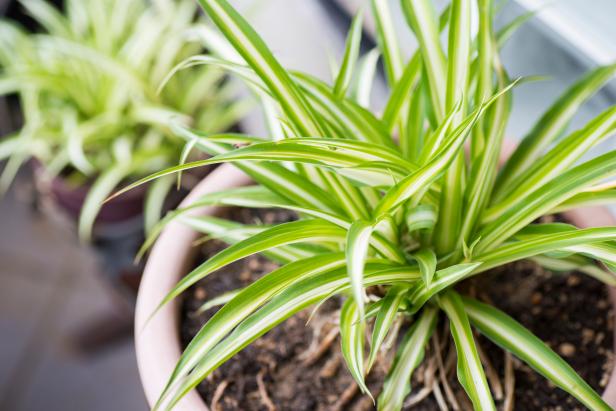
© iStockphoto/itasun
Spider Plant (Chlorophytum comosum) is a popular houseplant because its needs are simple and it features long leaves that will drape over the edge of its pot.

A spider plant is one of the easiest houseplants to grow, even for beginners. It’s also one of the most interesting. It has long, narrow leaves growing in rosettes that drape over the edge of the pot, with the added feature of even longer shoots producing plantlets that can be rooted and separated from the parent plant.
Spider Plant's Needs Are Simple
- Place the plant in bright to moderate light in a room that’s a comfortable temperature for everyone.
- Keep the soil slightly moist. Once-a-week watering is sufficient in spring and summer; in winter, allow the soil to dry a bit more between waterings. Some houseplants – including spider plants – are sensitive to fluoride in tap water. Consider using distilled water or rainwater for the plants.
- Fertilize every two to three weeks with a balanced houseplant fertilizer, following product directions.
Propagation of Spider Plants
If you want to grow new plants from old, spider plant (also known as airplane plant) makes it easy for you.
The young plantlets that grow at the end of the shoots root easily in damp potting mix. Arrange small pots of soil around the parent plant and push the base of a plantlet lightly into the soil in each pot. Keep the soil moist; the “baby” plant should root in two or three weeks, and then it can be cut from the parent. Continue to grow them in the smaller pots and transplant to larger pots as needed.
Spider Plant Problems
Brown leaves may be a signal that you may be over- or underwatering. Don’t allow the soil to dry out too much for too long, but don’t allow the roots to become waterlogged, either. Also, winter heating can create a very dry atmosphere, and indoor plants suffer from the lack of humidity, especially if located near a heat vent or radiator. Moving the plant away from such heat sources, running a humidifier, grouping plants together or keeping them in a humid area (such as over the kitchen sink or in a bathroom where people shower) can help.
Another common reason for browning of leaf ends is the gradual build-up of minerals or salts from fertilizer. To leach out these salts periodically, water the plant to the point of runoff and repeat several times.
Heavily chlorinated water or water that's been run through a water softener can be additional reasons for browning tips. If you suspect this, try using collected rainwater or water from another source.
Aphids, scale and mealybugs can develop on many houseplants. A shower of cool or lukewarm water may get rid of aphids. For a heavier infestation, spraying with insecticidal soap should take care of the problem. Scale (which looks like small brown spots on the leaves) and mealybugs (small, cottony white insects) can be removed with a cotton swab dipped in rubbing alcohol.
A plant that doesn’t produce shoots and plantlets may be too young, or it could be growing in a pot that’s too large. A spider plant may produce more shoots when it’s slightly rootbound. It also requires bright light, but not direct sun. A plant that doesn’t get enough light may not produce shoots and plantlets.
Other Benefits
Studies have shown that Chlorophytum comosum — spider plant’s botanical name — is among a group of plants that improve indoor air quality by absorbing harmful elements in the air. While one plant may not make much difference in a room’s environment, plants do contribute to the general well-being of a home and its occupants.
20 Best Plants for Cleaning Indoor Air 21 Photos
Discover the top 20 air purifying plants that aid in the removal of pollutants.
Spider plant is native to tropical Africa, so in most of the US, it’s grown as a houseplant, but you can place it outdoors, out of direct sun, during the summer months. Just be sure to bring it back inside before the temperature drops enough to damage the plant. Frost will kill this tropical beauty.
Indoors or out, spider plant looks great in a hanging basket, or placed on a table where its long shoots with the plant "babies" on the ends make an eye-catching display.
More Helpful Houseplant Info
